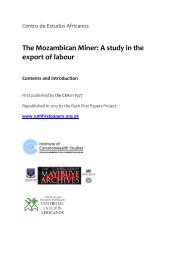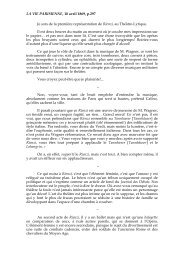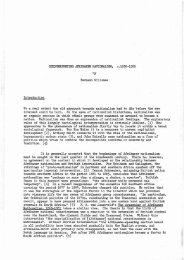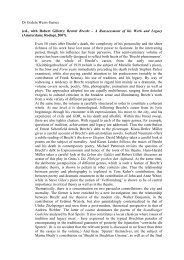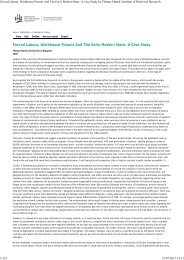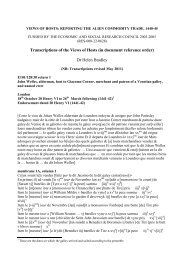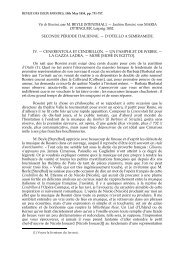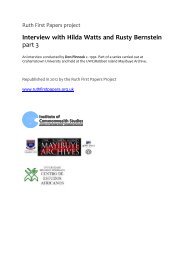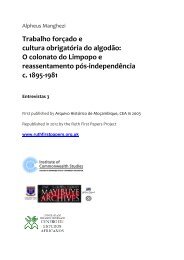Roraima: Brazil's northernmost frontier by John Hemming - SAS-Space
Roraima: Brazil's northernmost frontier by John Hemming - SAS-Space
Roraima: Brazil's northernmost frontier by John Hemming - SAS-Space
You also want an ePaper? Increase the reach of your titles
YUMPU automatically turns print PDFs into web optimized ePapers that Google loves.
There has also been steady immigration from other parts of Brazil. In the<br />
Territory's first census, in 1950 shortly after its separation from the state of<br />
Amazonas, a remarkable 76.4% of the population of 18,100 said that they<br />
had come from elsewhere in Brazil. In later censuses the ratio of non-natives<br />
fell but was still very high and well above that of any other part of the country<br />
except Acre. In 1960 it was 20.6%, in 1970 20.4%, and in 1980 rose again to<br />
30.3%. The rise in immigrants in the 1980 census was obviously a result of the<br />
opening of the BR-174 road link to Manaus. Most migrants came from the<br />
neighbouring state of Amazonas; many others from the north-eastern states<br />
of Maranhao and Ceara. Immigration from outside Brazil has always been<br />
negligible. 62<br />
This inward movement shows up to some extent in statistics of passenger<br />
traffic. In 1976, when access to <strong>Roraima</strong> was possible only <strong>by</strong> air or river,<br />
there were 23,000 passenger arrivals <strong>by</strong> air. By 1978, after the opening of the<br />
road link, air traffic had fallen to some 16,000; but it rose steadily, to over<br />
34,000 in 1983 and over 50,000 in 1984. Meanwhile, of course, much traffic<br />
switched to the far cheaper buses on the new Manaus-Boa Vista highway. 63<br />
Buses cover the 775 kms from Manaus in under thirty hours if all goes well,<br />
and the 195 kms to Santa Elena de Guairen on the Venezuelan <strong>frontier</strong> in<br />
seven hours. These times will improve dramatically with the paving of more<br />
stretches of the road. Bus passenger traffic from Manaus rose from 14,000 in<br />
1980 to 17,600 in 1984; and international traffic along the dusty Tanamerican'<br />
highways to Venezuela and Guyana rose from 4,000 to 5,100 during the<br />
same period.<br />
Government action and other external events have sometimes spurred<br />
inward migration. There have been military movements, with the arrival of<br />
road-building army engineers of the 6th BEC (Batalhao de Engenharia de<br />
Construcao) in 1969, of a mechanised cavalry unit a few years later, and in<br />
1987 soldiers occupied <strong>frontier</strong> Indian posts in the controversial Calha Norte<br />
exercise. There were planned migrations of settler families into agricultural<br />
colonies. And there have been periodic rushes <strong>by</strong> prospectors when word<br />
spread of discoveries of gold or diamonds. The largest <strong>by</strong> far of these was in<br />
1988, when tens of thousands of fortune-seekers poured into <strong>Roraima</strong>.<br />
Boa Vista<br />
Rio Branco's new political status in 1943 brought an influx of civil servants<br />
to run the Territory and administer various development programmes. The<br />
town of Boa Vista was elevated to the rank of city and capital of the new Federal<br />
Territory.<br />
The first governor sent from Rio de Janeiro, the energetic Captain Ene (or<br />
Enio) Garcez dos Reis, took the bold and imaginative step in 1945 of employing<br />
the town-planning consultants Darcy A. Derenusson to design a plan for



